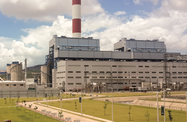Although fluctuations in international demand and pricing have put pressure on returns from Vietnam’s mining industry, the sector remains a magnet for foreign direct investment (FDI), a sign of confidence in its long-term prospects.

Mining attracted FDI totalling $7.7bn in the first half of the year, representing 10.6% of all FDI inflows during that period. Investment into the mining sector came second only to manufacturing at 66.7%, according to a report by global lender HSBC.
This indicates strong interest by overseas investors in the industry’s long-term prospects, despite short-term cooling in some segments.
FDI levels could be lifted further if the government approves plans by India’s state-owned National Mineral Development Corporation (NMDC) to acquire a stake in tungsten mining operations in Vietnam.
In February NMDC announced it was in talks to purchase a share in the Nui Phao polymetallic mine from Vietnam’s Masan Resources. This was followed on September 1 by a statement saying it was seeking permission to ink a memorandum of understanding to begin the due diligence process.
Decline in mining output weighs on industrial index
Vietnam’s industrial production index grew 6.7% year-on-year (y-o-y) in the first eight months of 2017, according to data issued by the General Statistics Office (GSO) in late August. This was slower than the annual rate of expansion seen both last year and in 2015.
A 6.9% decline in mining output contributed to slower growth on the production index, the GSO said.
The contraction was milder than the 11.4% drop in production in the first quarter of the year, suggesting improving sector conditions. However, the downturn may continue into next year, according to a forecast by the Ministry of Planning and Investment in early September, unless conditions in the industry pick up further.
The slower growth could also weigh on the broader economy, potentially making the ministry’s economic top-end growth target of 6.8% for 2018 harder to achieve.
Domestic coal demand set to increase to 121.5 tonnes per annum by 2025
One segment of Vietnam’s extraction industry that has outperformed the sector is coal, with both output and revenue up in the first eight months of this year, according to a report issued by the Ministry of Industry and Trade on September 8.
In the first eight months of 2017 the volume of coal exports rose by 142.1% y-o-y to reach 1.4m tonnes. Earnings from outbound shipments of coal from January to August also increased by 228.5% y-o-y to $188m.
The majority of shipments were made by the state-operated Vinacomin, which accounted for nearly 62% of total exports from January to August. However, domestic consumption represented 87% of the company’s coal output in the eight-month period, which stood at 24.6m tonnes.
These results for the overall coal exports through to the end of August surpass year-end results in 2016. Last year exports totalled 1.3m tonnes, down 27% compared to 2015, with earnings falling by 23.8% to $141m in that period, according to data from the Ministry of Industry and Trade.
Domestic coal demand is projected to rise from roughly 86.4m tonnes per annum (tpa) in 2016 to 121.5m tpa by 2025 and 156.6m tpa by 2030, according to a government report released last year.
The appetite for coal is being driven by its expanding role in the energy mix. More than half of the country’s electricity requirements will be met by coal-fired plants by 2030, under the government’s revised Power Development Master Plan VII, with 83 plants adding 55.3 GW to the grid.
Coal dependence sparks environmental concerns
Though demand for coal and minerals remains solid, environmental concerns could curb expansion or add to production costs.
The increased dependence on coal for electricity generation will contribute to higher levels of air pollution unless advanced purification technology is deployed by the power sector. This will build on running costs for existing plants and raise the budget for plants not yet constructed.
Environmental concerns could also see the closure of the largest iron ore mine in South-east Asia, with the Ministry of Planning and Investment announcing on August 30 it would push for the Thach Khe mine to be shut down due to its adverse environmental impact.
These concerns, and the government’s moves to rein in environmental damage caused by mining, could affect investments in the sector, though Vietnam’s growing need for energy and metals should ensure mining remains a core industry.


